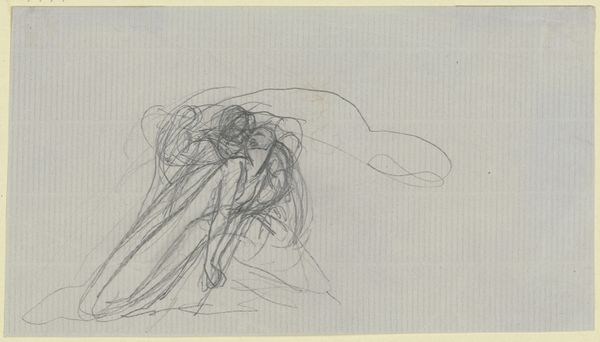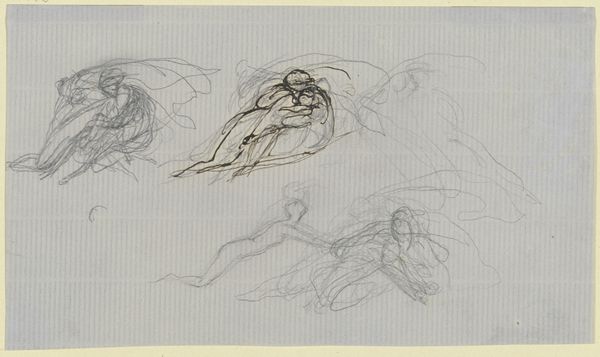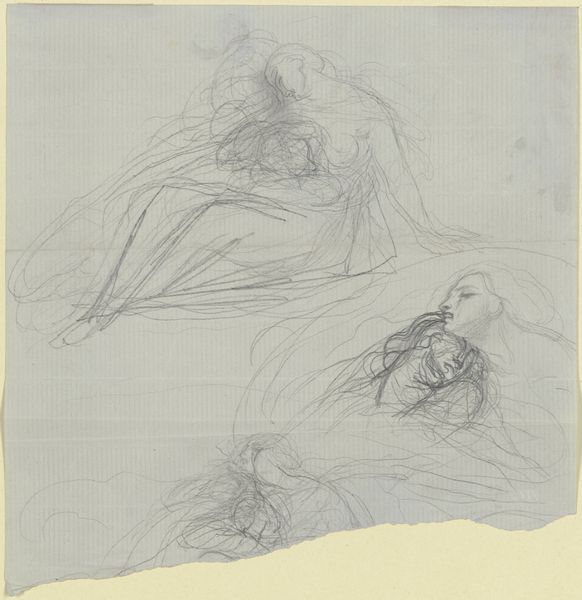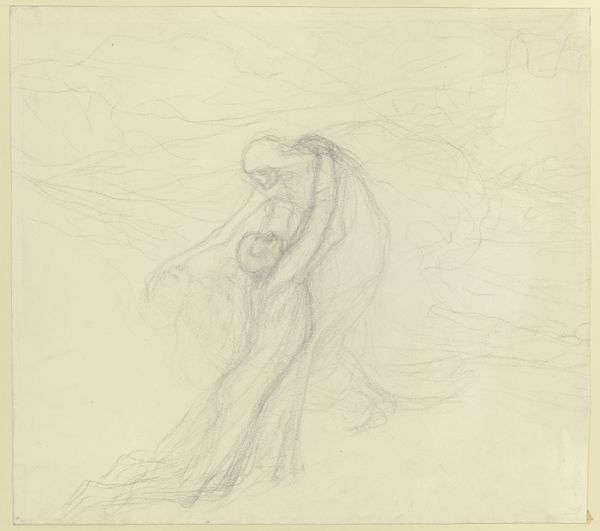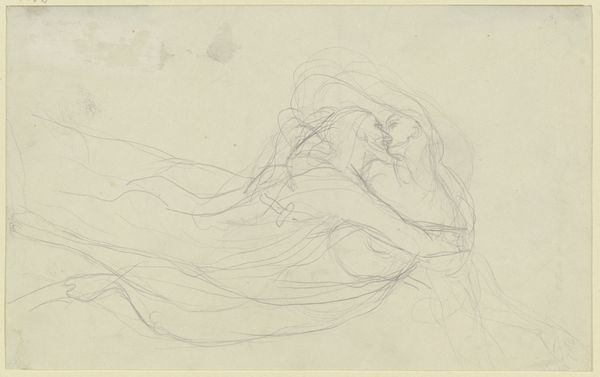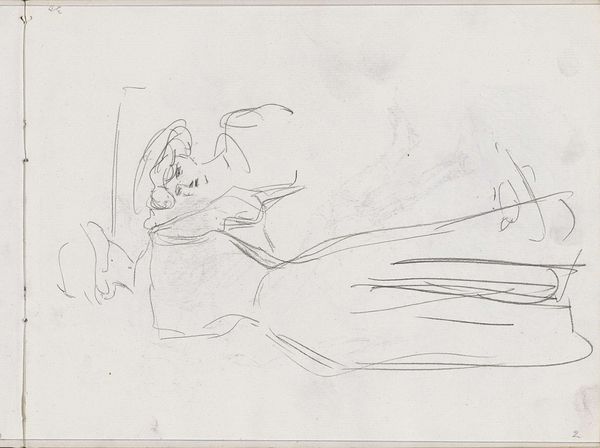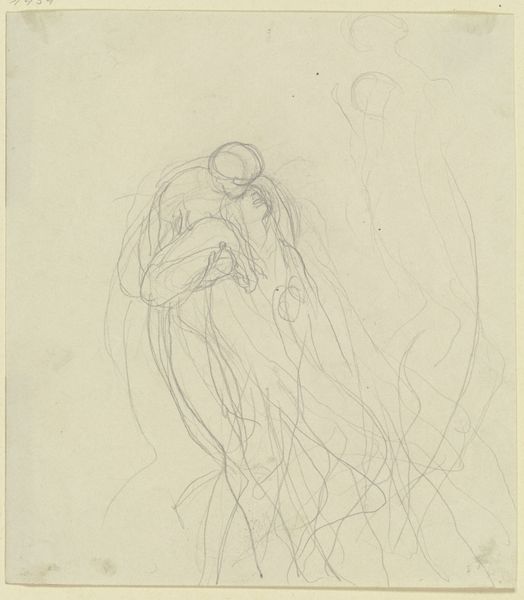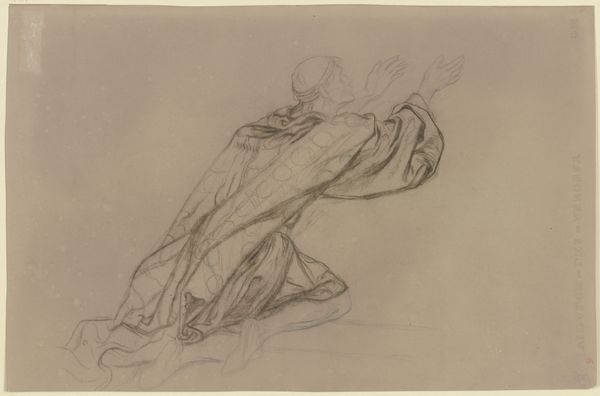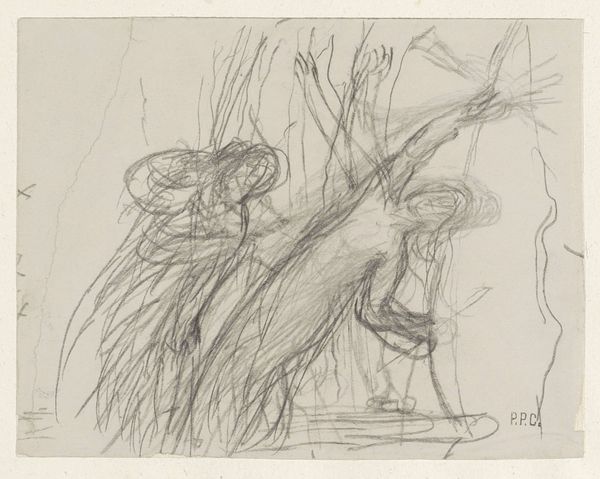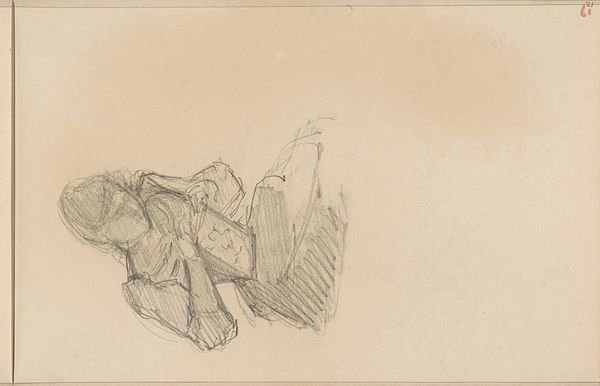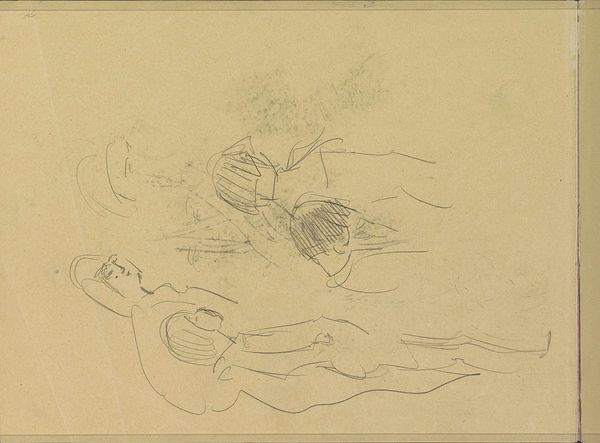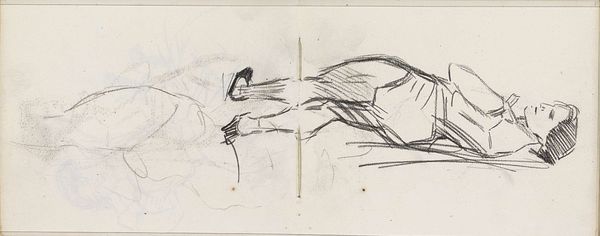
drawing, pencil, charcoal
#
drawing
#
16_19th-century
#
pencil sketch
#
figuration
#
sketch
#
romanticism
#
pencil
#
line
#
charcoal
Copyright: Public Domain
Editor: Here we have Victor Müller's pencil and charcoal sketch, "Schwebendes Paar in Umarmung (Francesca und Paolo)". The ethereal quality of the lines and the floating figures gives it a really dreamlike, romantic feel. How do you interpret this work? Curator: For me, this drawing opens a window onto the material conditions and the social context surrounding artistic production in the 19th century. Let's consider the function of a sketch like this: was it intended as a preparatory study for a larger, more "finished" work, perhaps destined for the marketplace? Or was it, instead, a means of exploring ideas, emotions, or perhaps even engaging in personal reflection without the pressure of creating a commodity? Editor: That's interesting. I hadn't considered the economic factors. Curator: Exactly! Romanticism, despite its emphasis on emotion, was deeply embedded in the burgeoning capitalist society. The materials – the pencil, the charcoal, the paper itself – all speak to accessibility and relative affordability. Unlike the grand oil paintings commissioned by the aristocracy, works like these, especially studies, began to reach a wider audience through printmaking. Are we seeing here the democratization of art production and consumption? Editor: So, by focusing on the materials, you are really asking how it changes art's role in society. Curator: Precisely. And we should also ask who had access to even these 'cheaper' materials. Examining the labor involved in their production—from mining graphite to processing wood pulp for paper—opens up a whole new realm of inquiry. What impact might those labour relations have had on Muller's artistic practice, or maybe his thinking behind this Romantic image? Editor: This really changes how I look at the sketch, it's more than just a romantic depiction of doomed love, it's linked to how and why the piece could be created in the first place. Curator: I think it forces us to move away from individual genius to understand this as part of material history.
Comments
No comments
Be the first to comment and join the conversation on the ultimate creative platform.

